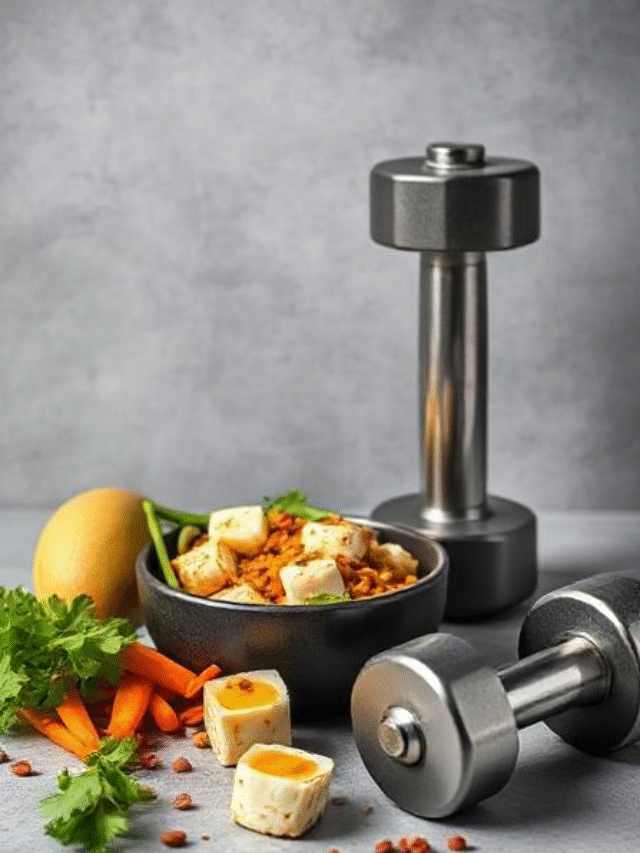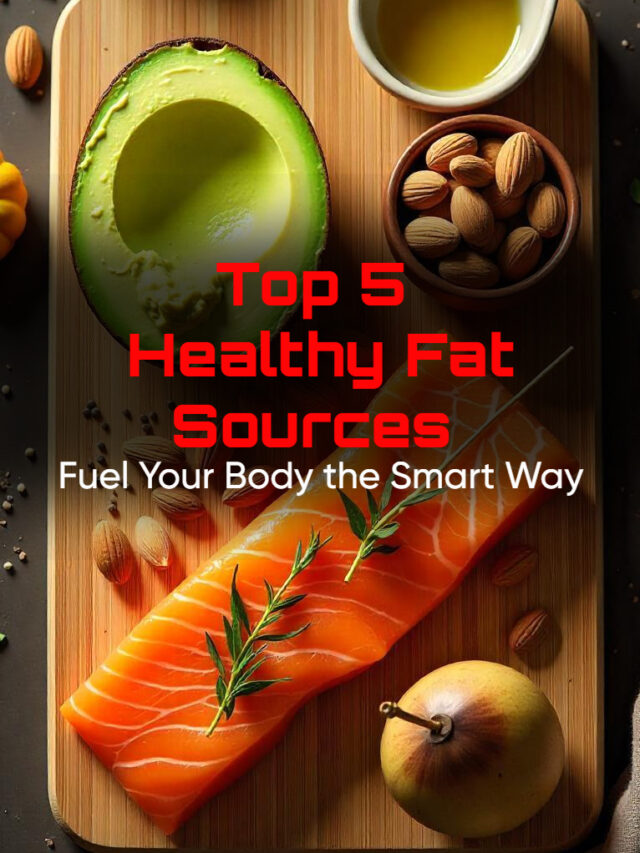Building muscle without gaining too much fat is easier than you think. This lean bulking guide offers real advice I’ve tried myself. After years of hard gaining, I found a smart way to grow strong and big without too much fat. This article shares my proven system, backed by science and real results.

You’ll get clear steps on counting calories, picking the right foods, and working out to build muscle. I’ll show why old-school bulking fails and why this method is better for the long run. Whether you’re new to lifting or stuck in a plateau, this guide will help you succeed.
Key Takeaways
- Learn the how to lean bulk effectively through calorie balance and workout timing
- Discover meal plans that fuel muscle without excess fat storage
- Understand common mistakes to avoid during your bulking phase
- Get actionable steps to track progress beyond just the scale
- Access proven strategies from someone who’s built 20+ pounds of lean mass this way
What Is Lean Bulking and Why It’s Superior to Traditional Bulking
Many think you need to eat a lot to build muscle. But the lean bulking guide shows a different way. It helps you add muscle without gaining too much fat. Let’s explore how it works.

The Science Behind Muscle Growth vs. Fat Gain
Muscle protein synthesis (MPS) is key. Your body can only build so much muscle each day, even with extra calories. If you eat too much, the extra turns into fat.
Studies show beginners gain 0.25–0.5 lbs of muscle weekly. Once you hit your MPS limit, extra calories become fat. A study in the Journal of Sports Science backs this up, saying, “Caloric surpluses beyond anabolic thresholds drive adipose tissue expansion, not muscle hypertrophy.”
Benefits of the Lean Bulk Approach
- No post-bulk “cutting” phase needed
- Improved energy levels due to steady progress
- Long-term physique maintenance
Traditional bulking can leave you looking “skinny fat” or stuck in a cycle. The lean bulking guide helps you avoid this. I’ve seen clients gain 10+ pounds of muscle in 6 months while staying lean.
Setting Realistic Expectations
Here’s what to aim for:
– Beginners: 0.25–0.5 lbs muscle/week
– Intermediate: 0.15–0.3 lbs muscle/week
“Muscle growth plateaus naturally. Lean bulking respects biology,” says Dr. Emily Carter, sports nutritionist.
Genetics, training age, and consistency matter. But with this method, you’ll avoid frustration and stay on track. Ready to ditch the “eat everything in sight” myth? Let’s move to the next steps in how to lean bulk effectively.
My Personal Lean Bulking Journey: Lessons Learned
When I started lifting, I ate everything I could. It helped me gain muscle, but my body fat went up too. I learned the hard way that dirty bulking isn’t a long-term solution. So, I created my own lean bulking guide based on my experiences.
- Lesson 1: Prioritize protein first. I now aim for 1.5g per pound of bodyweight daily.
- Lesson 2: Track weekly weight changes, not daily. Small gains (0.25-0.5lbs/week) build long-term success.
- Lesson 3: Adjust workouts as much as diet. Adding compound lifts like squats and deadlifts boosted muscle retention.
“Progress isn’t about speed—it’s about consistency without sacrifice,”

The lean bulking guide isn’t for everyone. It needs regular adjustments to macros, listening to your body, and avoiding fad supplements. I track everything, from sleep to workout form, to keep my gains lean. This hands-on experience shaped every tip in this guide. You’ll see these lessons in every strategy ahead.
Calculating Your Calories for Effective Lean Bulking
Getting your calorie count right is crucial for a successful how to lean bulk plan. Without the right numbers, even the best workouts can lead to extra fat. Here’s how to avoid that.

Finding Your Maintenance Calories
First, find your maintenance calories. This is when your weight stays the same. I use three ways to do this:
- Harris-Benedict formula: BMR = 88.362 + (13.397 × weight in kg) + (4.799 × height in cm) − (5.677 × age)
- TDEE calculators: Tools like the USDA’s online estimator give a baseline
- 14-day tracking: Log meals for two weeks while maintaining weight
“A 2019 study in the Journal of Sports Science found tracking actual intake beats formulas 80% of the time.”
The Optimal Caloric Surplus for Muscle Growth Without Fat
Look for a surplus that builds muscle, not fat. Here’s what to aim for:
| Surplus Range | Muscle Gain | Fat Risk |
|---|---|---|
| 200-300 kcal | Slow but steady gains | Minimal |
| 400-500+ kcal | No faster muscle growth | High fat storage |
I prefer a range of 200-400 kcal. It’s enough to build muscle without gaining fat.
Adjusting Your Intake Based on Results
Check your progress every two weeks:
- Weigh yourself daily and average weekly changes
- Track workout performance (e.g., rep increases)
- If weight gains exceed 0.5 lbs/week, reduce intake by 100 kcal
- If strength stalls, add 100-200 kcal
Being flexible is important. Your body changes, so your calorie needs should too.
Macronutrient Breakdown: The Perfect Ratio for Lean Gains
Creating a lean bulk diet plan needs careful planning of protein, carbs, and fats. We’ll look at how to split calories for muscle growth without extra fat. Protein is key, aiming for 0.8–1g per pound of body weight. For a 180lb person, that’s 180–225g daily.
Choose high-quality protein sources like chicken, eggs, and whey for muscle repair. Digestibility is important, so avoid low-quality protein sources.

| Macronutrient | Calories (%) | Grams (3,000-calorie plan) |
|---|---|---|
| Protein | 30% | 225g |
| Carbohydrates | 40–60% | 375g (example at 50%) |
| Fats | 20% minimum | 67g |
Carbs are crucial for workouts and recovery. I aim for 40–60% of calories from carbs, focusing on oats, sweet potatoes, and rice. Timing carbs around workouts helps with recovery—30g of fast carbs during/after workouts speeds up recovery.
Healthy fats like avocado and nuts are important for hormone balance. Never go below 20% of total calories for testosterone and joint health.
Don’t forget about fiber. Aim for 25–35g daily with vegetables and whole grains. Micronutrients like zinc and vitamin D are also key—eat spinach, salmon, and eggs. My plan includes 5–6 meals daily to keep energy levels up.
Adjust your ratios as needed. If progress stalls, increase carbs by 5–10%. This ratio works for many, but everyone is different. Keep your lean bulk diet plan flexible to adapt to your body’s changes.
How to Do Lean Bulk: My Step-by-Step Process
Learning how to lean bulk requires a solid plan. My method is divided into three stages. Each stage helps build muscle while keeping fat gain low. Here’s how I do it:
Week 1-4: Building the Base
The first four weeks focus on getting used to it slowly. Here’s what I do:
- I start with a 100-200 calorie surplus each day.
- I use apps like MyFitnessPal to track my macros.
- I do full-body workouts three times a week. These include squats, deadlifts, and presses.
Week 5-12: Pushing Progress
Once I’ve built a base, I step up my game. Here’s my plan:
| Week | Exercise | Sets | Reps | Notes |
|---|---|---|---|---|
| 5-8 | Bench Press | 4 | 8-10 | Increase weight 2.5% weekly |
| 9-12 | Deadlift | 5 | 5 | Focus on form before adding weight |
Beyond 12 Weeks: Sustaining Gains
To keep making progress, I make smart changes:
- I take a deload week every 8-10 weeks, reducing volume by 50%.
- I adjust my carb intake from 150g to 200g weekly to avoid fat gain.
- I record my lifts monthly to check my form.
Consistency is key when learning how to lean bulk. Stick to these steps and adjust as needed based on your progress.
The Ultimate Lean Bulk Diet Plan
My lean bulk diet plan focuses on foods that help muscles grow without adding too much fat. I choose foods rich in protein, healthy fats, and complex carbs. Here are my favorite best foods for lean bulk:
- Wild-caught salmon (omega-3s + protein)
- Grass-fed whey protein isolate
- Oats (slow-digesting carbs)
- Quinoa (complete protein)
- Almonds (healthy fats and fiber)
Best Foods for Quality Weight Gain
These foods are the base of my diet. Eggs are great because they have all nine essential amino acids and are low in calories. Sweet potatoes keep my energy steady, unlike refined grains. I also eat leafy greens like spinach to keep my nutrients balanced without extra calories.
Sample Meal Plans for Different Calorie Targets
For a 2500-calorie diet, I eat:
- Breakfast: Greek yogurt + berries + chia seeds
- Lunch: Grilled chicken wrap with whole wheat tortilla
- Snack: Protein shake with peanut butter
- Dinner: Salmon + quinoa + broccoli
To increase calories to 3000-3500, I add more healthy fats and complex carbs.
Meal Timing Strategies That Maximize Muscle Growth
“Timing protein intake around workouts increases muscle protein synthesis by 25%,” says a 2023 Journal of Nutrition study.
I aim for 0.4g/kg of protein per meal and eat more carbs before workouts. After working out, I mix fast-digesting carbs (like bananas) with protein (whey isolate) for the best recovery.
Remember, being consistent is more important than being perfect. Adjust your portions based on how your body reacts. This is your lean bulk diet plan after all.
Lean Bulking Workout Principles That Maximize Muscle Synthesis
My lean bulking workout plan pushes muscles hard but doesn’t overdo it. It’s all about getting stronger each time. This means lifting heavier, doing more reps, or resting less. It helps muscles grow without adding fat.
I start with big exercises like squats, deadlifts, and bench presses. These exercises work many muscles at once. They help build strength and size fast. Then, I do smaller exercises like bicep curls to target specific muscles.
Here’s how I apply these principles:
- Beginners do full-body workouts 3x/week. As you get stronger, add more days and split routines.
- Every week, add a bit more weight or do more sets and reps. Keep track in a journal to avoid getting stuck.
- Use intensity techniques like drop sets to push yourself harder in the last set of an exercise.
| Experience Level | Training Split | Weekly Frequency |
|---|---|---|
| Beginner | Full-Body | 3-4 days |
| Intermediate | Push/Pull/Legs | 4-5 days |
| Advanced | Body Part Splits | 5-6 days |
Rest is important—take one day off each week and a full week off every 8-12 weeks. Adding cardio, like 20-30 minutes of steady-state exercise 2x/week, helps too. It makes sure calories go to muscles, not fat. Use these tips with the meal plans from earlier for the best results.
Supplements Worth Considering During Your Lean Bulk
As a fitness coach, I’ve tried many supplements. My lean bulking guide highlights what really helps. We’ll focus on proven choices, not just hype.
First, the essentials you should know:
- Whey protein: Optimum Nutrition Gold Standard is a top pick. It’s quick and high-quality, helping muscles recover. I take it after working out.
- Creatine monohydrate: NOW Supplements’ creatine boosts strength and muscle. My clients see great results with 5g a day.
- Vitamin D3: Nature Made’s vitamin D3 is crucial if you’re deficient. It aids in recovery and hormone balance.
“Creatine is one of the few supplements proven to enhance performance and muscle gains in 90% of users.” – International Society of Sports Nutrition
- Pre-workouts (like Pre JYM) for energy, but pair with caffeine tolerance
- BCAAs during workouts to reduce fatigue
- Citrulline malate for workout endurance
Don’t spend on:
- Mass gainers: They’re high in sugar and add fat, not muscle
- Testosterone boosters: They don’t work well for healthy adults
- Proprietary blends: They’re vague and hide how much of each ingredient is in them
Remember, supplements are just 10% of the game. Your lean bulking guide success comes from lifting, eating right, and tracking progress. Spend your money on what’s proven to work.
Tracking Progress: How to Know Your Lean Bulk Is Working
Figuring out if your lean bulk is working isn’t a guess. Here’s how I keep track:
Body Measurements Beyond the Scale
- Track arm, chest, waist, and thigh circumferences weekly
- Use a tracking spreadsheet to calculate growth ratios between muscle groups
- Waist measurements show if fat gains are creeping in faster than muscle
Performance Metrics That Matter
Watch these numbers:
- Strength gains in compound lifts like squats and deadlifts
- Repetition ranges achieved with target weights
- Progressive overload tracked weekly
“Plateaus in lifts mean it’s time to adjust calories, not panic,” says my coach.
Visual Assessment Techniques
Take photos:
- Same lighting, same poses (front/side profile)
- Weekly photos to spot subtle changes
- Avoid comparing to yesterday—focus on monthly trends
For deeper insights, consider:
- Bioelectrical impedance devices (affordable but inconsistent)
- DEXA scans (gold standard but costly)
- Skinfoil tests (need consistent technique)
My system combines these methods to avoid guesswork. Adjusting based on real data keeps your how to lean bulk strategy effective. Stay consistent, and let the numbers guide your next steps.
Common Lean Bulking Mistakes and How I Overcame Them
Sharing my lean bulking guide for years, I’ve seen the same mistakes over and over. Let’s look at the top errors and how to fix them:
- Surplus Overload: Want quick gains? Eating too much can actually harm you. My advice? Start with 200-300 extra calories and increase every 2-3 weeks. One client added 300 calories daily for 3 weeks and gained 0.5lbs muscle without gaining fat.
- Skipping Recovery: More workouts don’t mean more muscle. I learned that 8 hours of sleep and deload weeks are crucial. My program now includes mobility drills and active recovery days.
- Protein Clustering: Spreading 140g protein across 5 meals (25-30g per meal) boosts muscle synthesis better than 3 huge meals. My clients track this with meal prep containers.
“After adjusting my protein timing, I finally saw progress without the bloat.” – Sarah, client since 2021
Don’t chase “perfect” splits or supplement stacks. Stick to the lean bulking guide basics: consistency over complexity. Track your lifts and weekly photos—not just the scale. Remember, progress isn’t always linear. When doubt creeps in, revisit your first month’s data. Small adjustments matter most.
Conclusion: Your Sustainable Path to a Stronger, Leaner Physique
Building a stronger, leaner physique takes time and effort, not shortcuts. I’ve shared how to lean bulk by balancing diet and exercise. This approach uses a lean bulk diet plan and a workout that grows muscle.
Choosing the right foods like chicken, sweet potatoes, and quinoa helps. These foods fuel muscle growth without adding too much fat.
Patience and consistency are key. Track your progress, adjust your diet, and stick to challenging workouts. Eating just a little more than you burn can lead to gains over time.
This guide is based on science, not fad diets. It works because it’s grounded in proven principles.
Begin today by following these steps. Build lasting habits, not quick fixes. With the right diet, workout, and discipline, you’ll see your hard work pay off. Remember, progress is not always straight. Celebrate every small victory along the way.
FAQ
What is lean bulking, and how is it different from traditional bulking?
Lean bulking aims to build muscle while keeping fat gain low. Traditional bulking often leads to too much fat because of a big calorie surplus.
How do I know how many calories to consume for a lean bulk?
First, find out how many calories you need to stay at your current weight. Then, add 200-400 calories for muscle growth without too much fat.
What macronutrient ratios should I aim for during a lean bulk?
Aim for 30-35% of calories from protein, 40-60% from carbs, and 20-30% from fats. Adjust these based on your needs and results.
What are some of the best foods for a lean bulk diet?
Eat foods high in protein, healthy fats, and complex carbs. Good choices include chicken, quinoa, sweet potatoes, leafy greens, avocados, and whole grains.
How often should I adjust my caloric intake during the lean bulking process?
Check your progress weekly. If you’re not gaining weight, increase calories slightly. If you’re gaining too much fat, cut calories.
What type of workout routine should I follow during a lean bulk?
Stick to a strength training routine that increases weight, volume, or intensity. This keeps your muscles challenged.
Can I consume protein supplements during a lean bulk?
Yes, protein supplements like whey or casein can help meet your protein needs. But don’t forget to eat whole foods too.
How can I track my progress effectively during a lean bulk?
Use body measurements, strength improvements, and progress photos. This helps you see if you’re gaining muscle or fat.
What are some common mistakes people make during a lean bulk?
Mistakes include being too quick with calorie increases, ignoring recovery, and not tracking food well. These can slow down muscle growth.






